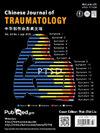两种血液净化过滤器治疗腹内败血症的比较疗效:一项回顾性研究。
IF 1.9
4区 医学
Q2 ORTHOPEDICS
引用次数: 0
摘要
目的:比较连续肾替代疗法(CRRT)使用oXiris或传统血液净化过滤器治疗腹内败血症的疗效。方法:对2019年10月至2023年8月我院收治的脓毒性重症腹腔感染患者进行回顾性分析。根据病史、症状、体格检查和实验室/影像学检查结果符合腹内败血症标准的患者被纳入研究。排除标准:妊娠、晚期恶性肿瘤、入住重症监护室前有CRRT病史、既往存在肝肾衰竭。治疗前后24 h和72 h的心率(HR)、平均动脉压、氧合指数、乳酸水平(Lac)、血小板计数(PLT)、中性粒细胞百分比、血清降钙素原、c反应蛋白、白细胞介素(IL)-6水平、去甲肾上腺素剂量、急性生理和慢性健康评估II (APACHE II)、顺序器官衰竭评估(SOFA)评分,以及呼吸机使用时间、血液净化治疗时间、比较使用oXiris或常规血液滤过接受CRRT的患者的重症监护病房和住院时间,以及14天和28天死亡率。采用SPSS Statistics 26.0软件进行统计分析,包括通过logistic回归方程和重复测量方差分析构建预测模型。结果:基线值包括抗生素给药时间、源头控制时间和开始CRRT时间在两组之间相似(均p < 0.05)。接受常规CRRT的患者在24 h和72 h时HR有显著变化,其他指标无显著变化(p=0.041, p=0.026)。oXiris组治疗后24 h HR、Lac、IL-6、APACHEⅱ评分均有显著改善(p0.05)。除HR、氧合指数、PLT外,oXiris组治疗后变化率△(%)均显著高于对照组(p < 0.05)。两组患者呼吸机使用时间、CRRT时间、重症监护病房和住院时间差异无统计学意义(p < 0.05)。两组14天死亡率相似(p=0.091)。在排除CRRT中断的患者后,oXiris组的28天死亡率显著低于常规组(25.0% vs. 54.2%;p = 0.050)。源控制时间每增加1小时,28天死亡率增加9.6%,APACHE II评分每增加1分,28天死亡率增加21.3%。结论:在严重的腹部感染中,oXiris过滤器可能比传统的CRRT有优势,这可能为临床治疗提供一种替代方法。同时,早期控制活动性传染源可以降低重症腹部感染患者的病例死亡率。本文章由计算机程序翻译,如有差异,请以英文原文为准。
Comparative efficacy of two hemopurification filters for treating intra-abdominal sepsis: A retrospective study
Purpose
To compare the efficacy of continuous renal replacement therapy (CRRT) using either oXiris or conventional hemopurification filters in the treatment of intra-abdominal sepsis.
Methods
We conducted a retrospective analysis of septic patients with severe intra-abdominal infections admitted to our hospital from October 2019 to August 2023. Patients who meet the criteria for intra-abdominal sepsis based on medical history, symptoms, physical examination, and laboratory/imaging findings were included. Exclusion criteria: pregnancy, terminal malignancy, prior CRRT before intensive care unit admission, pre-existing liver or renal failure. Heart rate (HR), mean arterial pressure, oxygenation index, lactic acid level (Lac), platelet count (PLT), neutrophil percentage, serum levels of procalcitonin, C-reactive protein, interleukin (IL)-6, norepinephrine dosage, acute physiology and chronic health evaluation II (APACHE II), and sequential organ failure assessment (SOFA) scores before and after 24 h and 72 h of treatment, as well as ventilator use time, hemopurification treatment time, intensive care unit and hospital lengths of stay, and 14-day and 28-day mortality were compared between patients receiving CRRT using either oXiris or conventional hemofiltration. Statistical analysis was performed using SPSS Statistics 26.0 software, including the construction of predictive models via logistic regression equations and repeated measures ANOVA.
Results
Baseline values including time to antibiotic administration, time to source control, and time to initiation of CRRT were similar between the 2 groups (all p>0.05). Patients receiving conventional CRRT exhibited significant changes in HR but of none of the other indexes at the 24 h and 72 h time points (p=0.041, p=0.026, respectively). The oXiris group showed significant improvements in HR, Lac, IL-6, and APACHE II score 24 h after treatment (p<0.05); after 72 h, all indexes were improved except PLT (all p<0.05). Intergroup comparison disclosed significant differences in HR, Lac, norepinephrine dose, APACHE II, SOFA, neutrophil percentage, and IL-6 after 24 h of treatment (p<0.05). Mean arterial pressure, serum levels of procalcitonin, C-reactive protein, SOFA score, and norepinephrine dosage were similar between the 2 groups at 24 h (p>0.05). Except for HR, oxygenation index, and PLT, post-treatment change rates of △ (%) were significantly greater in the oXiris group (p < 0.05). Duration of ventilator use, CRRT time, and intensive care unit and hospital lengths of stay were similar between the 2 groups (p>0.05). The 14-day mortality rates of the 2 groups were similar (p=0.091). After excluding patients whose CRRT was interrupted, 28-day mortality was significantly lower in the oXiris than in the conventional group (25.0% vs. 54.2%; p=0.050). The 28-day mortality rate increased by 9.6% for each additional hour required for source control and by 21.3% for each 1-point increase in APACHE II score.
Conclusions
In severe abdominal infections, the oXiris filter may have advantages over conventional CRRT, which may provide an alternative to clinical treatment. Meanwhile, early active infection source control may reduce the case mortality rate of patients with severe abdominal infections.
求助全文
通过发布文献求助,成功后即可免费获取论文全文。
去求助
来源期刊

Chinese Journal of Traumatology
ORTHOPEDICS-
CiteScore
3.80
自引率
4.80%
发文量
1707
审稿时长
28 weeks
期刊介绍:
Chinese Journal of Traumatology (CJT, ISSN 1008-1275) was launched in 1998 and is a peer-reviewed English journal authorized by Chinese Association of Trauma, Chinese Medical Association. It is multidisciplinary and designed to provide the most current and relevant information for both the clinical and basic research in the field of traumatic medicine. CJT primarily publishes expert forums, original papers, case reports and so on. Topics cover trauma system and management, surgical procedures, acute care, rehabilitation, post-traumatic complications, translational medicine, traffic medicine and other related areas. The journal especially emphasizes clinical application, technique, surgical video, guideline, recommendations for more effective surgical approaches.
 求助内容:
求助内容: 应助结果提醒方式:
应助结果提醒方式:


